Haze (aka Original Haze, Haze Brothers)
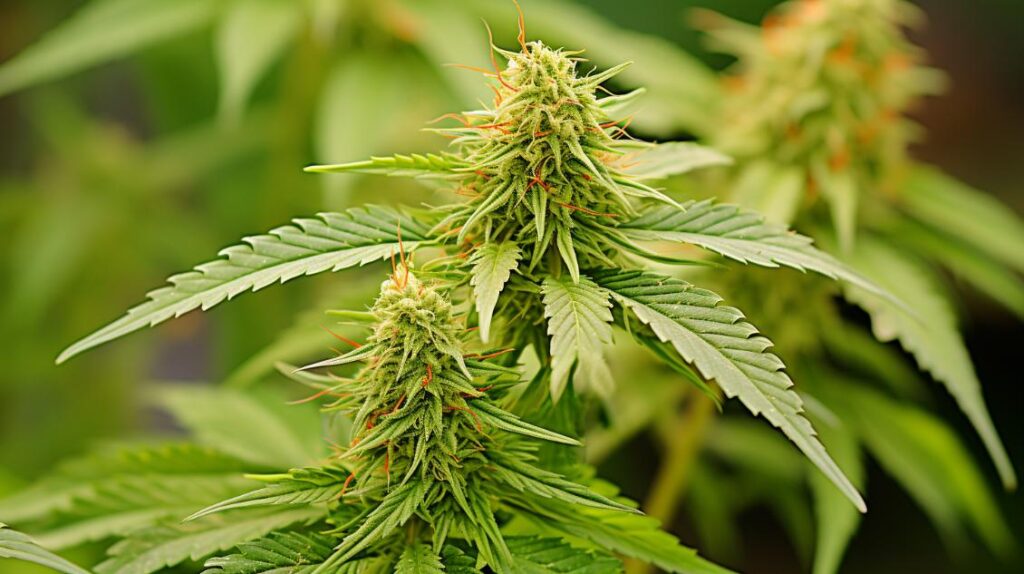
The Haze Strain, a sativa-dominant hybrid, has captivated cannabis connoisseurs and medical patients alike with its unique blend of stimulating and therapeutic properties. Originating from a rich genetic tapestry that weaves together Colombian Gold, Thai, Acapulco Gold, and Indian landrace strains, Haze stands as a testament to the complexity and diversity found within cannabis genetics.
Its notable effects, characterized by an energizing uplift and a spur in creativity, have positioned it as a favored choice for daytime use. Yet, beyond its immediate psychoactive impact lies a more nuanced profile, including a distinctive terpene composition that contributes to its spicy, herbal flavor nuances and potential medical applications.
As we explore the multifaceted nature of the Haze Strain, from its historical roots in the 1960s Californian cannabis culture to its current status in the pantheon of iconic strains, a deeper understanding of its influence on both recreational and medicinal cannabis landscapes emerges, inviting further exploration into its enduring legacy and ongoing contributions to cannabis research and culture.
Genetic Lineage
The genetic lineage of Haze strains, predominantly Sativa or Sativa-dominant, is intricately linked to a blend of landrace strains including Columbian Gold, Thai, Acapulco Gold, and Indian varieties, although the precise genetic combination utilized in their initial cultivation remains elusive.
Originating from California in the 1960s and ’70s, the Haze Brothers are credited with the development of what would become known as the Original Haze, a cornerstone in the cannabis breeding community. This pioneering effort combined the robust genetic profiles of its parent strains, emphasizing the Sativa-dominant characteristics that have since defined the Haze lineage.
The contribution of these parent strains endowed Haze with distinct qualities, such as a longer flowering time and a heightened cerebral effect, traits that are hallmarks of Sativa-dominant genetics. The complexity of its genetic makeup has allowed Haze to serve as a foundational parent strain for numerous hybrid varieties, significantly influencing the diversification of cannabis strains.
Despite the challenges associated with cultivating Haze, due to its Sativa genetics, its enduring legacy within the cannabis community underscores the impact of its original genetic composition.
THC/CBD Content
Regarding the Haze strain, its THC content averages at 18% but can escalate to as high as 27%, while the CBD content remains notably low, typically under 1%. This significant THC concentration positions Haze among the more potent sativa cannabis varieties, known for delivering a strong cerebral and euphoric high. The Haze cannabis strains, with their distinguished THC/CBD profile, have been revered in the cannabis community for their unique psychoactive properties that stimulate creativity and provide uplifting effects. However, it’s crucial to approach these strains with caution, especially for those sensitive to THC, as the high levels may induce adverse effects such as paranoia and dizziness in some users.
| Component | Content |
|---|---|
| THC Average | 18% |
| THC Peak | 27% |
| CBD Average | <1% |
| Effects | Cerebral, Euphoric |
The professional handling and understanding of the Haze strain’s cannabinoid content are essential for both cultivators and consumers. By acknowledging the potent nature of these sativa strains, users can better navigate their experiences, ensuring a balance between the desired euphoric highs and maintaining a comfortable level of psychoactivity.
Terpene Profile
Diving into the Haze strain’s terpene profile reveals a complex blend of myrcene, pinene, and terpinolene, which collectively contribute to its distinctive earthy, citrus, and herbal aroma and flavor. This unique combination not only defines the sensory experience of Haze but also hints at the strain’s therapeutic potential.
Myrcene, known for its sedative effects, may offer stress and anxiety relief. Pinene, on the other hand, might enhance mental clarity and provide respiratory benefits, marked by its unmistakable pine-like aroma. Terpinolene adds a final layer of complexity with its uplifting and creative effects, accompanied by a floral and herbal scent.
Understanding the intricate terpene profile of the Haze strain is crucial for predicting its potential effects and selecting strains with similar profiles for desired outcomes. The presence of hints of citrus from myrcene enhancing the refreshing quality, earthy undertones that ground the user’s experience, a spicy scent subtly woven through the aroma, and pine-like freshness from pinene, clearing the mind and senses, create a vivid imagery and sensory expectation for the consumer.
This underlines the importance of terpenes in the overall cannabis experience.
Effects
Understanding the Haze strain’s terpene profile lays the groundwork for exploring its distinct effects, which include an energetic boost suitable for daytime use and creative endeavors. This Sativa-dominant variety is renowned for its ability to enhance creativity and focus, attributes highly sought after by artists and individuals in need of inspiration. The Entourage Effect, a phenomenon where multiple cannabis compounds interact synergistically, plays a crucial role in amplifying these effects. The unique combination of terpenes and cannabinoids found in Haze strains contributes to an uplifted state, providing users with a sense of euphoria and cheerfulness.
However, while the positive effects are substantial, potential users should exercise caution due to possible negative reactions such as paranoia, dry mouth, and dizziness. This highlights the importance of moderation and understanding one’s tolerance levels.
Additionally, the Haze strain has shown promise in helping to alleviate symptoms associated with stress, anxiety, and depression, positioning it as a potential therapeutic option for managing these conditions. It is this blend of uplifting and therapeutic benefits that makes Haze strains a cornerstone among Sativa varieties, showcasing the complex interplay of its chemical constituents in producing its signature effects.
Medical Uses
Given its uplifting effects, the Haze strain has been widely recognized for its potential in medical applications, particularly in managing stress and anxiety. The versatility of this strain extends beyond mere recreational use, showcasing significant therapeutic benefits that address various conditions. Detailed exploration and anecdotal evidence have highlighted its efficacy in several key areas of medical concern.
-
Stress and Anxiety Management: The Haze strain’s ability to induce relaxation and elevate mood makes it a preferred choice for individuals grappling with stress and anxiety, offering a natural alternative to traditional medications.
-
Depression Relief: Users report a significant reduction in depressive symptoms, attributing this improvement to the strain’s uplifting and euphoric effects.
-
Enhancement of Focus and Creativity: Its potential to boost focus and creativity has made the Haze strain a valuable aid for those with attention deficit disorders such as ADHD or ADD.
-
Pain and Nausea Relief: Beyond mental health, the Haze strain is appreciated for its analgesic properties, providing relief from chronic pain and alleviating symptoms of nausea while stimulating appetite.
The medical uses of the Haze strain underline its importance in a holistic approach to wellness, emphasizing the necessity of further research to fully understand and harness its therapeutic potentials.
Flavor and Aroma
Transitioning from its medical applications, the Haze strain’s flavor and aroma profile presents a complex blend of spicy and herbal notes, underpinned by tobacco undertones, that distinguishes it within the cannabis connoisseur community. The botanical complexity of the Haze strain is not merely a sensory experience but an embodiment of the strain’s rich lineage. Its flavor and aroma are a testament to the meticulous cultivation and selection processes that have preserved its distinctive qualities.
| Aspect | Characteristic | Detail |
|---|---|---|
| Flavor Profile | Spicy/Herbal | Accentuated by tobacco undertones |
| Aroma | Spicy Scent | Complemented by hints of citrus and earthy sweetness |
| Visual Appeal | Bright Green | Highlighted by vibrant orange pistils |
| Taste | Sweet and Citrusy | Distinctive among cannabis varieties |
| Entourage Effect | Unique Experience | Influenced by non-THC cannabinoids and terpenes |
Incorporating the Haze strain into celebrations such as the 4th of July, Independence Day in the United States, could elevate the festivity’s ambiance, introducing an aromatic complexity reminiscent of freedom and diversity. Its unique flavor and aroma profile makes it a perfect complement to the day’s symbolic significance, merging the essence of liberty with the rich tapestry of American culture.
Appearance
Delving into the visual aesthetics of the Haze strain, its buds exhibit a captivating spectrum of green hues complemented by vibrant orange pistils, indicative of its sativa-dominant heritage. The appearance of Haze strains are usually a testament to their potent and cerebral effects, making them a visually appealing choice for cannabis enthusiasts. Notably, some variants, like the Purple Haze, introduce a unique visual twist with their distinct coloration.
-
Vibrant spectrum of green shades: The primary color of the Haze strain buds ranges from light to dark green, embodying the vitality and robustness of its sativa lineage.
-
Vivid orange pistils: These bright strands weave through the buds, adding contrast and depth to the overall appearance, indicative of a healthy, mature plant.
-
Potent and resinous look: High THC content, averaging around 18-27%, gives the buds a sticky, glistening appearance, highlighting their potent nature.
-
Characteristic dark green leaves with orange hairs: This classic trait of Haze strain plants adds to the visual appeal, underlining the strong sativa characteristics with a promise of uplifting and cerebral effects.
The visual allure of Haze strains, complemented by their spicy and herbal flavor profile, creates a holistic appreciation for both their appearance and their anticipated effects.
Grow Information
While the vibrant appearance of Haze strains captures the attention of many cannabis enthusiasts, the cultivation process demands a deeper understanding of their unique growth requirements and challenges. Growing Haze strains necessitates patience, as their maturation period is significantly longer than that of other cannabis strains. This is primarily due to their challenging growth characteristics, which stem from their predominantly Sativa genetics.
Haze variants, being either pure Sativa or Sativa-dominant, require a grower with experience and knowledge to navigate their specific cultivation needs. Key considerations when growing Haze cannabis seeds include their resistance to mold, disease, and the ability to withstand various weather conditions. These factors are critical to ensuring a successful harvest.
Moreover, achieving peak potency in Haze cannabis buds involves meticulous harvesting, drying, and curing techniques, which enhance their distinct flavors, aromas, and effects. Given the complex nature of Haze strains, seeking professional advice is advisable, especially when using Haze cannabis for medical purposes. Individual responses can vary, and it’s important to be aware of potential adverse effects such as headaches, paranoia, dry mouth, and dry eyes. Understanding these nuances is essential for both novice and experienced growers aiming to cultivate Haze variants successfully.
Adverse Effects
Understanding the potential adverse effects of Haze strains, such as paranoia, dry mouth, and dizziness, is crucial for users to ensure a safe consumption experience. The Haze strain, celebrated for its uplifting and energizing effects, carries with it a spectrum of adverse effects that can impact the user’s comfort and health. These effects, while not universally experienced, highlight the importance of moderation and individual sensitivity when engaging with this particular cannabis strain.
The adverse effects associated with the Haze strain include:
- Paranoia: A heightened state of anxiety and fear, which can be unsettling for the user.
- Dry Mouth: Also known as ‘cottonmouth,’ this involves a noticeable decrease in saliva production, leading to discomfort.
- Dizziness: Users may experience a sense of unsteadiness or lightheadedness, which can affect balance and coordination.
- Mental Fog: Difficulty in concentrating or maintaining focus, often described as a clouding of mental clarity.
These symptoms underscore the need for consumers to approach the Haze strain with caution and awareness. By understanding and respecting the potential adverse effects, users can better navigate their experiences with this potent cannabis variety, ensuring a more enjoyable and safe consumption experience.
Comparisons with Similar Strains
After exploring the adverse effects of the Haze strain, it is essential to examine how it compares with other strains known for similar properties and effects. Haze, a sativa-dominant cannabis strain, is renowned for its energetic and uplifting effects, making it a favorite among users seeking creativity and enthusiasm. To understand Haze’s place within the broader cannabis landscape, let’s compare it with similar strains based on their effects and flavor profiles.
| Strain | Effects | Flavor Profile |
|---|---|---|
| Sour Diesel | Energetic, Uplift | Diesel, Earthy |
| Jack Herer | Creative, Blissful | Spicy, Pine |
| Amnesia Haze | Creative, Euphoric | Citrus, Earthy |
| Super Silver Haze | Energetic, Uplift | Sweet, Citrus |
| Green Crack | Uplift, Focused | Fruity, Mango |
| Durban Poison | Energetic, Uplift | Sweet, Pine |
| Lemon Haze | Uplift, Happy | Lemon, Citrus |
| Super Lemon Haze | Energetic, Happy | Lemon, Sweet |
| OG Kush | Relax, Happy | Earthy, Pine |
| Trainwreck | Euphoric, Uplift | Earthy, Lemon |
This table illustrates the nuanced distinctions and similarities among these strains, highlighting Haze’s unique position due to its energetic effects and citrusy flavor profile.
Research and Studies
Exploring the scientific landscape reveals a growing body of research focused on the Haze strain, highlighting its distinct cannabinoid profile, terpene composition, and potential therapeutic benefits. The origins of Haze marijuana are often discussed within academic circles, aiming to understand its unique properties and how they contribute to its effects and medical potential.
-
Cannabinoid Profile: Studies have demonstrated that the Haze strain possesses a complex cannabinoid profile, which includes a higher concentration of THC and a notable presence of CBD. This balance is believed to contribute to its efficacy in managing symptoms of stress, anxiety, and depression.
-
Terpene Composition: Research into the terpene profile of Haze strains has found a rich array of aromatic compounds, including myrcene, limonene, and pinene, which may work synergistically with cannabinoids to enhance therapeutic effects.
-
Potential Therapeutic Properties: Clinical and preclinical studies are investigating the strain’s anti-anxiety, antidepressant, and mood-stabilizing properties, offering hope for potential therapeutic applications.
-
Consumer Experiences: Empirical research includes analyses of user-reported experiences, which generally affirm the strain’s uplifting and euphoric effects, supporting its popularity among consumers seeking relief from mental health symptoms.
The integration of scientific evidence and consumer feedback underscores the importance of continued research on the Haze strain, emphasizing its potential in both recreational and medicinal contexts.
History and Origin
Building upon the scientific analysis of the Haze strain’s cannabinoid and terpene profiles, as well as its potential therapeutic benefits, it is crucial to examine the historical roots and origins of this iconic cannabis variety.
The genesis of the Haze strains can be traced back to California in the 1960s, a period marked by experimental cultivation and breeding of cannabis. At the heart of the Haze evolution were the Haze Brothers, whose pioneering efforts in Santa Cruz, California, led to the crossbreeding of the first original Haze strain. This strain combined genetics from diverse and potent landraces, including Columbian Gold, Thai, Acapulco Gold, and Indian strains, crafting a lineage that was predominantly Sativa or Sativa-dominant.
Despite its celebrated status, the exact genetic makeup of the first Haze remains shrouded in mystery, with its challenging cultivation characteristics contributing to its rarity. Haze strains require a longer maturation period than many other cannabis types, a trait that underscores their unique cultivation demands.
Over the decades, Haze has had a profound impact on the cannabis community, giving rise to a multitude of variants known for their energizing and uplifting effects, thereby cementing the legacy of the Haze Brothers and their seminal contribution to cannabis culture.
Frequently Asked Questions
What Strain Is Haze?
Haze is a Sativa-dominant strain with origins tracing back to California in the 1960s. Its cultivation, challenging due to longer maturation times, involves specific methods tailored to its unique genetic makeup and high THC content.
Why Is Haze so Good?
The excellence of this subject is attributed to advanced growing techniques and a complex terpene profile, offering users a unique blend of energetic and creative effects, alongside a distinct spicy/herbal flavor and aroma.
How Does Haze Make You Feel?
Consuming this substance typically induces a state of energetic creativity and mental clarity. Users report feeling uplifted, with enhanced focus and motivation, though some may experience adverse effects such as paranoia or dizziness.
Which Is Better Kush or Haze?
Determining whether Kush or Haze is superior depends on individual preference, with Kush’s origins in the Hindu Kush mountains contributing to its sedative effects, contrasting Haze’s cultivation for its uplifting and creative influence.
Conclusion
In conclusion, the Haze Strain, a sativa-dominant hybrid, has gained prominence for its energizing and mood-enhancing properties, beneficial in creative and daytime settings.
Its genetic lineage, rich in variety, contributes to its distinctive spicy/herbal flavor profile and a complex terpene composition, which underpins its therapeutic applications, particularly in stress, anxiety, and depression management.
However, attention to its potential adverse effects is crucial.
The strain’s historical roots trace back to California in the 1960s and ’70s, underscoring its enduring significance in cannabis culture and therapeutics.

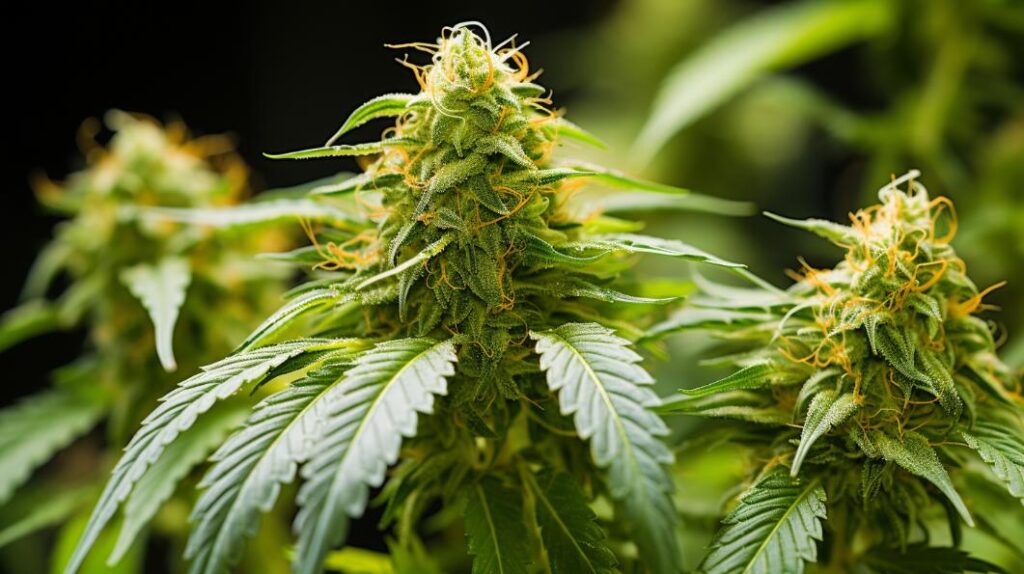
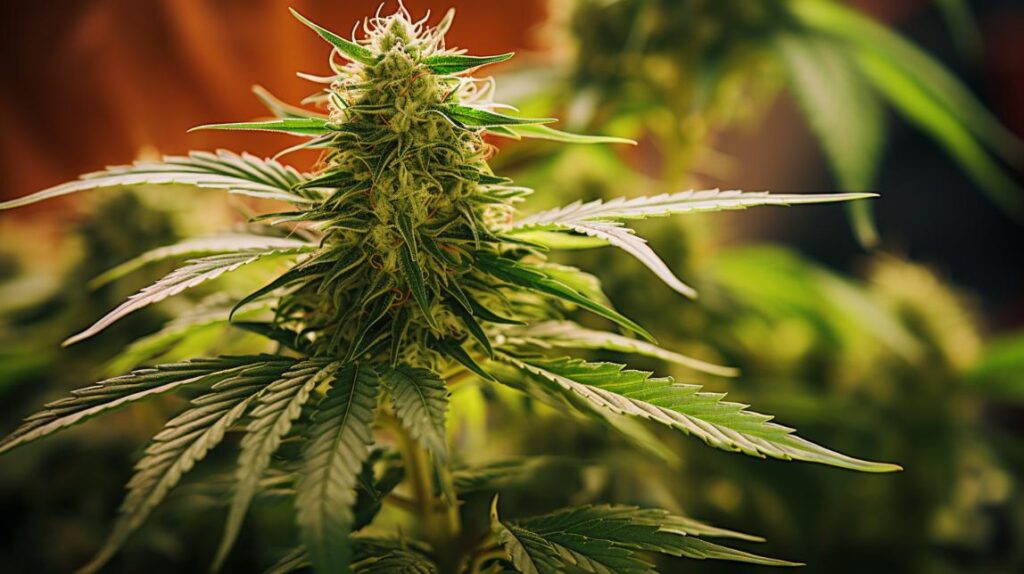
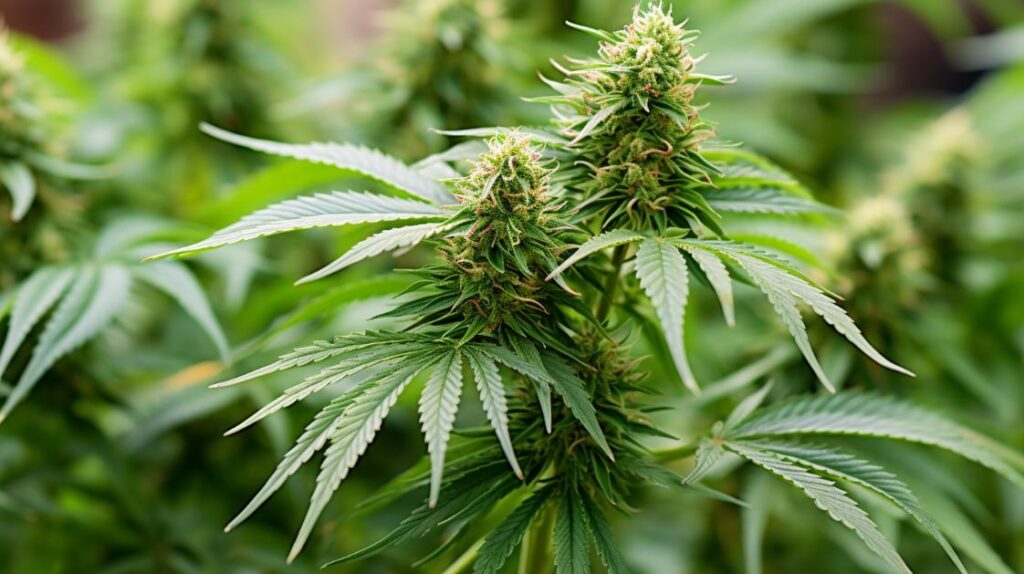
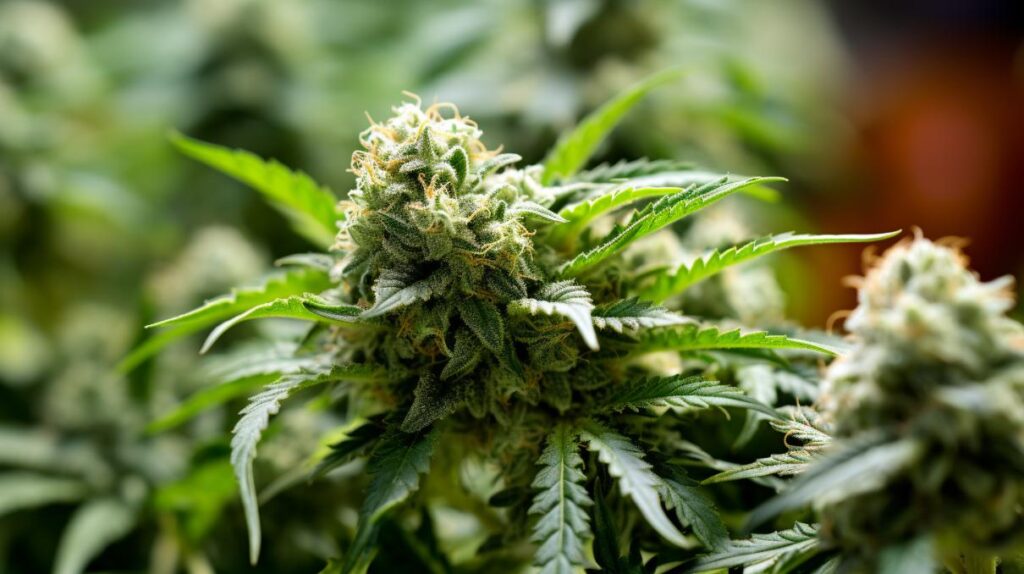
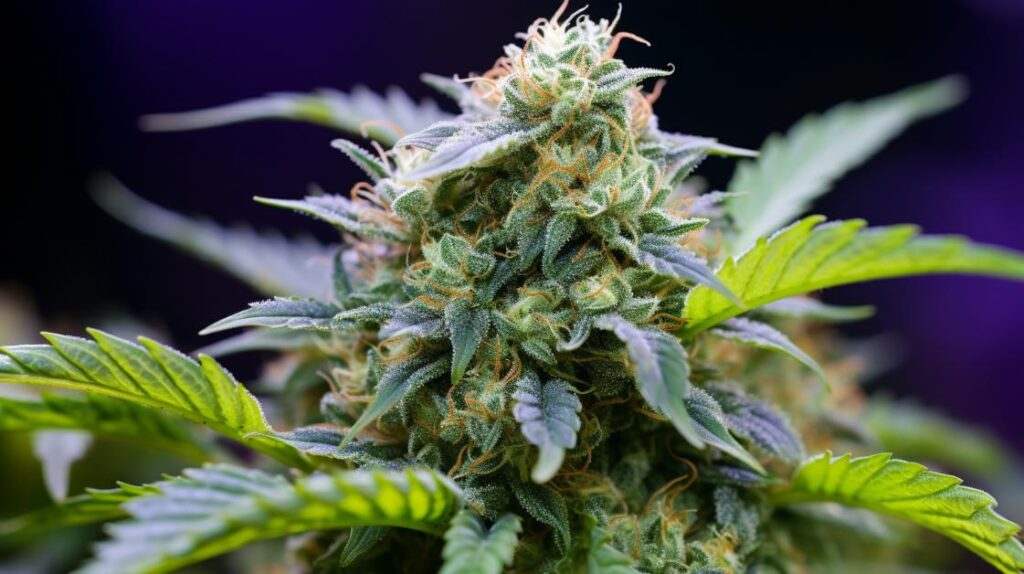

Responses